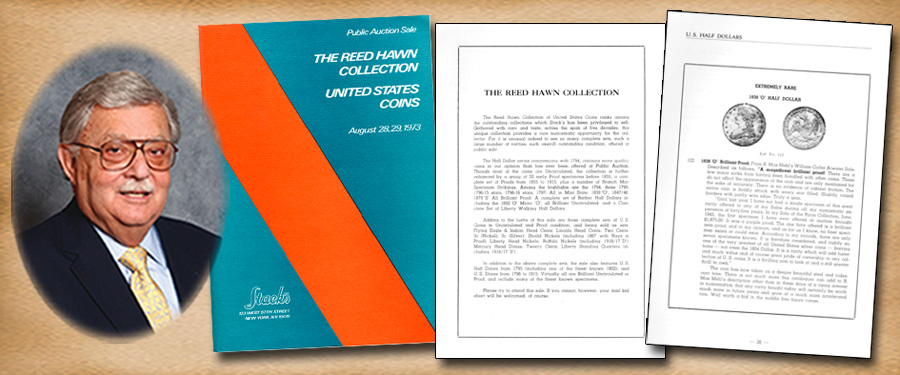
In the first three parts of the story of the Reed Hawn Collection I have described the man and his father, and the pains they took in forming an important collection, which Stack’s was privileged to auction.
During the post World War II period many collections were formed differently than they are today. First of all, the many "old timer coin collections" that came on the market often provided these post war collectors the opportunity to choose from multiple available specimens. The earlier collections had duplicates, dealers maintained multiple coins in their inventories and, with a smaller population of collectors, obtaining coins to fill out a collection was much simpler and less expensive.
It was during this time of extensive supply on the market that Reed Hawn built much of his collection. He participated in auctions and spent hours going through dealer stocks all over the country, including at Stack’s in New York City. Reed Hawn was able to amass great sets of coins, including the half dollar collection detailed earlier as well as many other sets. It was a comprehensive collection, a major offering when it was sold at auction.
Inflation was slow but steady after the war, and prices rose at a small increments during this period. Eventually it was the increase in the price of gold during the Nixon administration and the growing demand for goods and services in the economy that led to the increase in value of numismatic items.
In Part 5 of this series I will fast forward to the last quarter of the 20th century and tell how the Reed Hawn Collection grew during that period and discuss Stack’s later sale of the Reed Hawn Collection in 1993.





